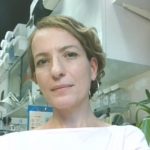Link to Pubmed [PMID] – 29624734
Link to DOI – 10.1002/glia.23335
Glia 2018 08; 66(8): 1709-1723
Neuroinflammation and iron accumulation are hallmarks of a variety of adult neurodegenerative diseases. In Sanfilippo syndrome (mucopolysaccharidosis type III, MPSIII, a pediatric neurodegenerative disease that shares some features with adult neurodegenerative diseases), the progressive accumulation of heparan sulfate oligosaccharides (HSOs) induces microglia and astrocytes to produce pro-inflammatory cytokines leading to severe neuroinflammation. The objectives of the present study were (1) to measure the local iron concentration and to assess iron metabolism in the brain of a MPSIIIB murine model and (2) to identify the brain cells involved in this accumulation. We found that iron accumulation in MPSIIIB mice primarily affected the cerebral cortex where hepcidin levels were higher than in wild-type mice, and increased with aging. This increase was correlated with low expression of ferroportin 1 (FPN1), and thus brain iron retention. Moreover, we showed in vitro that HSOs are directly responsible for the production of hepcidin and the relative decrease in FPN1 expression when added to cultures of microglia and, to a lesser extent, to cultures of astrocytes. In contrast, no significant differences were observed in neurons. Hepcidin induction results from activation of the TLR4 pathway and STAT3 signaling, and leads to iron retention within microglia. Our results show that microglia have a key role in cerebral hepcidin overexpression and thus in the brain iron accumulation observed in the MPSIIIB model.

